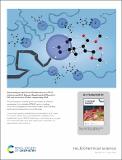| dc.contributor.author | Kilgallon, Landon J. | |
| dc.contributor.author | McFadden, Timothy P. | |
| dc.contributor.author | Sigman, Matthew S. | |
| dc.contributor.author | Johnson, Jeremiah A. | |
| dc.date.accessioned | 2024-09-13T16:48:13Z | |
| dc.date.available | 2024-09-13T16:48:13Z | |
| dc.date.issued | 2024-05-22 | |
| dc.identifier.issn | 2041-6539 | |
| dc.identifier.uri | https://hdl.handle.net/1721.1/156728 | |
| dc.description.abstract | Grubbs 3rd-generation (G3) pre-catalyst-initiated ring-opening metathesis polymerization (ROMP) remains an indispensable tool in the polymer chemist's toolbox. Tricyclononenes (TCN) and tricyclononadienes (TCND) represent under-explored classes of monomers for ROMP that have the potential to both advance fundamental knowledge (e.g., structure-polymerization kinetics relationships) and serve as practical tools for the polymer chemist (e.g., post-polymerization functionalization). In this work, a library of TCN and TCND imides, monoesters, and diesters, along with their exo-norbornene counterparts, were synthesized to compare their behaviors in G3-initiated ROMP. Real-time 1H NMR was used to study their polymerization kinetics; propagation rates (kp) were extracted for each monomer. To understand the relationships between monomer structure and ROMP propagation rates, density functional theory methods were used to calculate a variety of electronic and steric parameters for each monomer. While electronic parameters (e.g., HOMO energy levels) correlated positively with the measured kp values, steric parameters generally gave improved correlations, which indicates that monomer size and shape are better predictors for kp than electronic parameters for this data set. Furthermore, the TCND diester—which contains an electron-deficient cyclobutene that is resistant to ROMP—and its polymer p(TCND) are shown to be highly reactive toward DBU-catalyzed conjugate addition reactions with thiols, providing a protecting- and activating-group free strategy for post-polymerization modification. | en_US |
| dc.publisher | Royal Society of Chemistry | en_US |
| dc.relation.isversionof | https://doi.org/10.1039/D4SC01986E | en_US |
| dc.rights | Creative Commons Attribution-Noncommercial | en_US |
| dc.rights.uri | https://creativecommons.org/licenses/by-nc/3.0/ | en_US |
| dc.source | Royal Society of Chemistry | en_US |
| dc.title | Tricyclononenes and tricyclononadienes as efficient monomers for controlled ROMP: understanding structure–propagation rate relationships and enabling facile post-polymerization modification | en_US |
| dc.type | Article | en_US |
| dc.identifier.citation | Chem. Sci., 2024,15, 8334-8345 | en_US |
| dc.contributor.department | Massachusetts Institute of Technology. Department of Chemistry | en_US |
| dc.contributor.department | Koch Institute for Integrative Cancer Research at MIT | en_US |
| dc.relation.journal | Chemical Science | en_US |
| dc.eprint.version | Final published version | en_US |
| dc.type.uri | http://purl.org/eprint/type/JournalArticle | en_US |
| eprint.status | http://purl.org/eprint/status/PeerReviewed | en_US |
| dspace.date.submission | 2024-09-06T15:48:26Z | |
| mit.journal.volume | 15 | en_US |
| mit.license | PUBLISHER_CC | |
| mit.metadata.status | Authority Work and Publication Information Needed | en_US |
